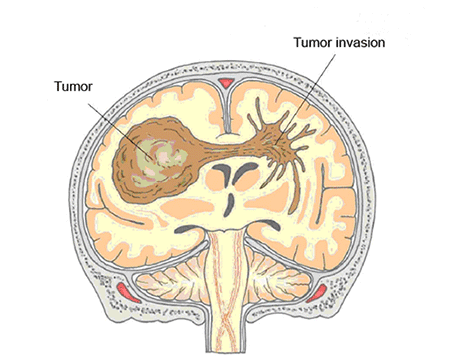- HOME
- For Patients
- Glioma
Glioma
- About glioma
- Symptom of glioma
- Diagnosis of glioma
- Treatment of glioma
- Surgical treatment under the MRI
About glioma
The brain is composed of neurons (nerve cells), nerve fibers, and glial cells (also known as neuroglia), which fill up the space between nerve cells and fibers. Tumors that arise from glial cells are called gliomas. Gliomas account for around 25-30% of all brain tumors, and are regarded as a malignant form of brain cancer. Gliomas invade the surrounding brain tissue as they grow (see illustration). This means that the border with healthy brain tissue becomes indistinguishable, making treatment difficult. This type of tumor is divided into four stages according to the appearance under the microscope of samples harvested during surgery. These stages correlate strongly with treatment outcomes. The more advanced the stage, the worse the treatment outcome is likely to be. The 5-year survival rate for patients at the most advanced stage is around 8%, making this one of the very worst cancers in terms of response to treatment.

M Matsumae. Understanding the tumor. Clinical study. Vol 29, No. 14, 2008
Medical Friend Co. Ltd. Illustrator Kitahara Isao







